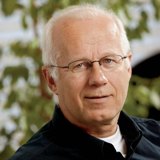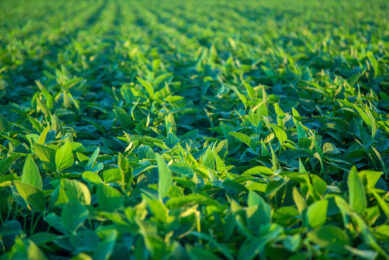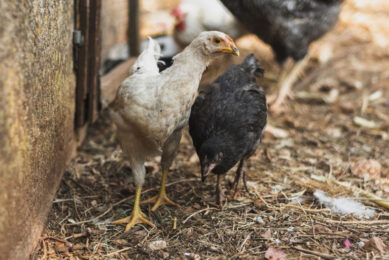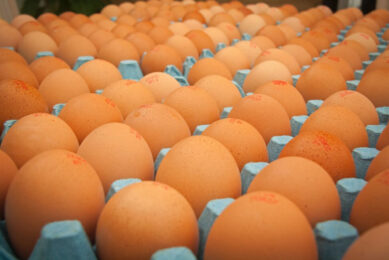The future is looking bright for the poultry industry
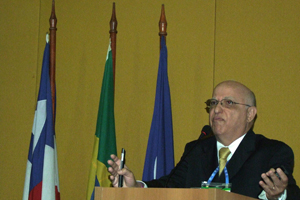
Although the current market situation does not look that great, with activists going against the industry, the future for poultry production gives reason for optimism. At least that is the opinion of poultry market guru Osler Desouzart. He spoke at the World Poultry Congress in Salvador, Brazil.
When estimating the future you need to have some knowledge of the past, said Osler Desouzart when he started his lively presentation on the last day of the World Poultry Congress in Salvador, Brazil. In this respect, he explained that there are few points that are relevant. Most important is that since 1965 food production has surpassed world population increase and that the human diet has changed towards more animal product intake at the cost of basic staples, such as roots and tubers and pulses and even cereals (Figure 1). It is commonly known that as income grows the proportion of animal products in the human diet increases. In 1961 no less than 84.7% of the average dietary energy intake of the world population came from vegetal products. In 2007, this percentage declined to 82.8%.
Income and meat consumption
As incomes grow, the human diet changes. Scholars and researchers, as Desouzart stated, have established in different studies that until the human being reaches an income of US$ 7,00/day, all income increase is used to enhance the diet, and that normally means higher intake of animal products, mainly meats in detriment of vegetal products. In developed countries, where daily income has surpassed the US$ 75/day, food expenses rarely increase. “At this level, a higher income will not affect the composition of one’s diet, except that people will be more prone to move from food categories to food concepts. On the other hand, a per capita daily availability of US$ 3.35 or US$ 3.25, as in South Asia and Sub-Saharan Africa will make people less inquisitive if the food is GMO free, organic, green, etc.”, said Desouzart. “Here the main question resides in availability and accessibility.
Most of Sub-Saharan Africa and South Asia register the lowest daily intake of calories. No wonder that these areas concentrate the majority of undernourished people in the world. This is not a libel against those that adopt new food values and that defend these values and production practices, in many times in a libellous form towards industrial agriculture. People are entitled to their opinions and choices, but food activism should consider that alternative production practices should be a choice and not an imposition.”“It is”, according to Desouzart, “for our poultry industry to consider and praise those demands, transforming them into products that bring higher profits, as they do when compared with industrially produced products. It is simply to call the attention that we in the poultry industry still have a long way to go to diminish world undernourishment and the changes we forecast for future food intake. Science and technology are indispensable for the new green silent revolution that will permit the world to cope with food demand to 2050. Science and technology should be guided by ethos and not limited by activism normally coming from the full-pockets and full-belly areas of the world.”
The world is eating more meat
The evolution of world meat production of the main species from 1960 to 2010 shows that together it has grown 2.54 times more than the world’s population (Table 1). Bovine meat lost its leadership in the mid 70s to pig meat and in the mid 90s to poultry meat. The reasons for poultry growth, in most cases is ‘price’. This answer is the simple one, according to Desouzart, because the reality is more complex:• Poultry production is present in 203 of the 233 countries and territories that registered any meat production in 2010;
• Poultry is accessible, available, handy, convenient, versatile, easy for the consumer to find, easy to prepare, can be cooked in myriads of ways and its taste is normally universally accepted;
• Poultry does not suffer from religious restrictions and is considered a healthy low fat meat;
• More poultry products have been launched since the 90’s than all of the other meats together. This constant innovation renders its consumption feasible several times per week without boring the consumer;
• Last but not least, poultry requires fewer natural resources in its production than all remaining land species.
“The natural resources needed for production, mainly water and arable land, are known and finite. As the human diet evolves to more meat intake, the more efficient species will prevail over the other and poultry is and will continue to be the winner,” said Desouzart.
Poultry to surpass pork
As the human diet evolves towards more animal product intake, mainly meats, and as water is not distributed evenly over the globe, water is a fundamental issue for the future supply of food to the world. Poultry is the most efficient of all meats in terms of ‘water productivity’ (Table 2), a factor which will be extremely relevant for the future, when production and consumption shall be driven towards more efficient species in terms of use of natural resources. These factors make Desouzart forecast that poultry should surpass pork as the principal source of meat by the year 2020. During the expert meeting on “How to Feed the World in 2050,” FAO, Rome, 24-26 June 2009, Nikos Alexandrato presented an optimistic long-term projection on meat production towards 2030/50 (Table 3). The projection was prepared in the years 2003- 05 (from historical data to 2001 and base year 1999/2001) but were considered to be still broadly valid at the level which the aggregates considered.
Desouzart presented an alternative more conservative scenario (Table 4), estimating that from 2030 onwards the forecasted growth of world meat production/consumption would further lose speed as developing countries achieved higher levels of consumption. Countries that led the growth process in this period, mainly China and Brazil, also have a much lower impact on world production growth as their achievement of higher consumption levels becomes more balanced. Poultry availability in either scenario demonstrates that the production expands to 2050 by 3.25/3.46 more than the population growth in the same period.
Migration
Besides an increase in production, Desouzart also predicts that the world poultry meat production is migrating from developed countries to developing countries (Figure 2), which are also steadily increasing their market share in world exports. (Figure 3). Developing countries will also concentrate the world’s future demographic growth. By the year 2050 we shall have 9,306 billion people on the planet, 2,410 billion more than in the year 2010. Africa and Asia, formed mostly by developing countries, shall concentrate 89.1% of this additional number of inhabitants.
Africa and Asia, along with parts of Latin America, shall, according to Desouzart, concentrate the consumption growth for meats up to 2050, since they shall have the population income increase to be used for diet enhancement and the need to eat. So it is safe to affirm that while developed countries have been the backbone of the poultry industry from the early 60s to the mid 90s, developing countries shall be the vector of growth in the coming four decades.
Does this mean that the poultry industry is doomed in developed countries, Desouzart questioned. All forecasts indicate that these countries will continue to answer for 30% to 35% of world demand, which is an important percentage considering their very mild demographic prospects. Many of the developed countries shall by then have reached saturation levels, along with some of the developing countries. Consumer values in developed countries are not and shall increasingly not be based on availability and abundance, but on how the food is produced; what impact it has on the environment and those involved in producing it; what sort of guarantees can be offered for food safety; how animals used for food production are handled and treated. Desouzart: “These values are not poetry from over fed people, but true concerns that each time permeate more segments of society, regardless of the excesses of activists, a majority of which even have good intentions.”
Let science lead the way
The future of the industry depends, according to Desouzart, not on those that are eating or overeating. “It lies in those that are not eating or not eating enough. There is an enormous disparity of average intake of poultry meat between developed, developing and least developed countries. Nevertheless we can cope with the future world demand for food of the 9.3 billion inhabitants of the planet by 2050 and the changes of human diet towards more animal products intake,” believes Desouzart. But he questions whether we shall be able to eliminate subnutrition. He thinks we can alleviate it but we shall not be able to eliminate it. And shame on us, not for not doing our work, but for not voicing against corruption and standing against rulers that are not for the people and by the people, but for themselves. And to the many activists against the livestock industry he gave the message that we can do all that without destroying the planet. Desouzart stated that sustainability – economic value + environmental value + social value – and production are not conflicting concepts, but a natural evolution of mankind towards new approaches to cope with the reality of a growing population on a planet of inelastic natural resources. He said when concluding his presentation: “No leg of the sustainability tripod should prevail over the others and doing the millennial “more with less”, which we have been doing for the last 40 years.
The food industry is able to enhance its productivity by using less inputs. It has done it in the past thanks to science and technology. It has saved over a billion people from starvation. We therefore have to continue with science and technology bringing us new methods, techniques, modernisation that enhances food production on a daily basis. It is the on-going Silent Green Revolution that makes us believe in the capacity of human minds to bring solutions for human problems, and feeding the growing planet’s population in a sustainable way is one if not a major one of them. Activism sometimes assumes the air of a re-edition of the Spanish Inquisition and some attitudes approach neo-luddism. Science and technology should have their limits determined by ethics and the pursuit of mankind’s well-being. Out of that it is anarcho-primitivism. Let science do its work and we shall feed the 9.3 billion inhabitants of the planet by 2050.”


